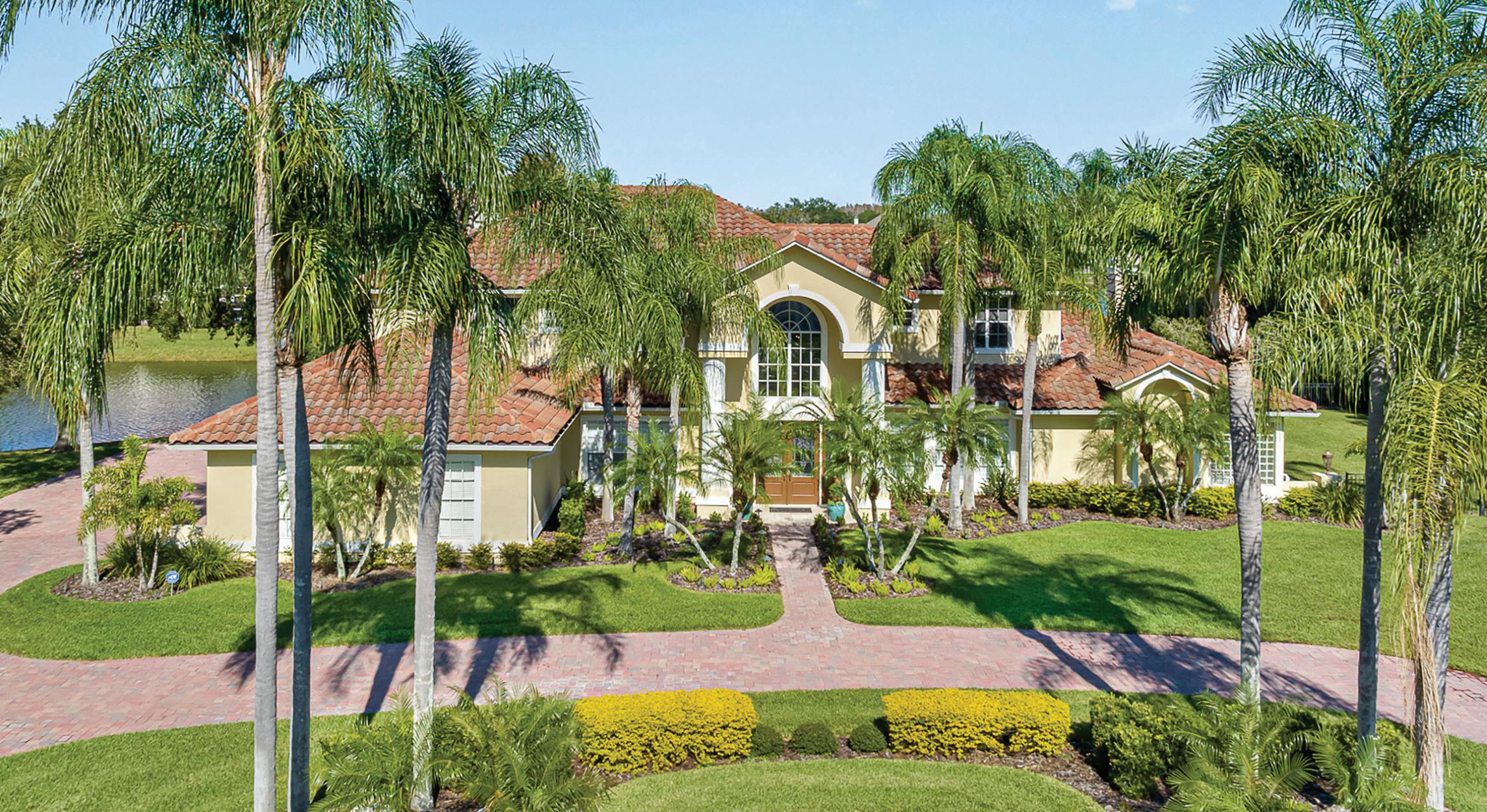
8 minute read
Sellers Adjusting Expectations Amid Changing Market
SELLERS ARE COMING TO TERMS WITH THE NEW REAL ESTATE market climate as prices rebalance and some homes remain on the market longer than they did a year ago. Expectations are adjusting and they are understanding they may not get the price they envisioned, perhaps even from just a few months ago.
But this new way of thinking is not necessarily happening overnight.
“Sellers are taking a little bit of time to get used to what is happening now to our price points,” said Candice Schott, senior partner and broker of record, Berkshire Hathaway HomeServices Toronto Realty. Some sellers are about six months behind “where the market is now, which is not unusual. Some have not adapted and their houses are staying on the market longer than they should.”
Sellers are slower to adapt to a transitioning market —remaining hopeful that their property will not be subject to the new market influences and still fetch a peak of the market pricing. Rather than look at neighboring houses’ listing prices, they should pay close attention to the most recent closing prices and comps, which are a more accurate reflection of the current market, Ms. Schott said.
“This is a really strange market that we’re in,” said Christy Budnick, CEO, Berkshire Hathaway HomeServices. “Typically, when we see a decline in the market, we’re not also dealing with low inventory, but that’s what’s happening now,” she said. “Currently, we’re seeing that sellers are nervous about the economy in general. They don’t want to make a move—partly because it’s a low inventory market and they’re worried they won’t find a home they want, and partly because higher interest rates mean their next home will cost more.”
“I do expect we may see an increase in inventory in spring,” Ms. Budnick said.
In central Florida, “seller sentiment is moderate,” said Casey Bryan, president, Berkshire Hathaway HomeServices Florida Properties Group. “Our market did not begin to normalize” until late in the summer of 2022, so house prices have remained relatively stable, she said.
“Sellers are certainly not expecting to have the buyer frenzy we’ve had for the past 30 months,” said Ms. Bryan, who is based in Trinity, Florida, just north of Tampa. She credits this to the communication and advice provided by agents and the receptive nature of consumers.
Most sellers understand that they need to make concessions, she added.
These concessions are being used, in some cases, to do interest-rate buydowns. “Therefore, the increased rate is not having a devastating impact on many sellers’ buying power.”
This plus the buyer’s ability to contribute a larger down payment from the proceeds of their previous home helps many, Ms. Bryan added. “With that said, there are some sellers choosing to stay put as they don’t want to risk losing their current rate or the new rate has truly affected their ability to purchase.”
Many homeowners in her markets have tremendous equity in their homes, “even if they bought 12 to 18 months ago,” she said. “This equity has been a driving force in some sellers choosing to move.” These sellers are using a portion of the equity in their existing homes toward a larger down payment on their next home, thereby reducing their monthly expenses, she said. “We are also seeing sellers reinvest some of the equity to fix up their next home.”
Interestingly, some sellers are choosing to sell even when it’s not necessary, Ms. Bryan said. “Many want a change of scenery and feel there is not as much competition as in the previous two years.”
In Omaha, Nebraska, the “market is normalizing,” said Todd Bartusek, real estate agent and principal, All Metro Real Estate Group, Berkshire Hathaway HomeServices Ambassador Real Estate. “We’ve seen the days on market increase, to the point that it’s now taking 30, 45, even 60 days to sell a house.”
In general, sellers are getting more realistic, he said. “I explain to my team that you need to set expectations and tell sellers not to think that their house will sell in a day.”
“I tell my sellers that it’s like selling a car,” he said. “You have to detail your house to get it to sell.”
In Mexico, sellers have been slower to acknowledge the shifting market downturn currently occurring in the U.S., said Greg Gunter, broker and owner of Berkshire Hathaway HomeServices Colonial Homes San Miguel. Further, Mexican owners seldom
A Slight Slowdown

carry mortgages. “In my 14 years here, I’ve only done two deals with a mortgage.”
“So sellers are sitting on a debt-free home, and carrying costs are low here,” he said. “They run from $3,000 to $5,000 a year for everything,” so there is not a lot of incentive for a seller to sell a house quickly. Their house may sit on the market for a year or more.
Another factor is that Mexico has no effective multiple listing service or online sites like Zillow or Realtor.com for sellers to get a feel for the market and how their home should be priced, Mr. Gunter said.
“Sellers don’t really understand that we have started to slow down and we’re seeing price negotiation,” he said, mentioning one of his recent transactions, in which a seller put her house on the market 10 months ago for $600,000, the price that an adjacent house had just sold for.
After several incremental price reductions, it just sold for $500,000, Mr. Gunter said. “I thought it would be a 2% or 3% negotiating range, not 12% or 14%.”
Market Predictions
Like Mr. Bartusek, he advises his sellers to stage their homes. “Home staging is an almost unheard-of concept in Mexico, but it often proves even more invaluable than in the U.S.,” said Mr. Gunter, who is also a designer and architect.
SPOTLIGHT ON: TORONTO, CANADA
Driven by an extreme lack of inventory, virtually all sectors of the Toronto market experienced record price growth in 2021, with some regions showing increases as high as 30% or even 40%.

Detached and semi-detached properties in the city core and the surrounding areas and suburbs “have performed incredibly well,” said Blair Johnson, president and owner, Berkshire Hathaway HomeServices Toronto Realty. Condos in the downtown core, which were hardest hit by the pandemic, quickly rebounded during the summer of 2021 when the city began to reopen. “We are now equal to the record average price seen in early 2020,” Mr. Johnson said, adding that the units average just under C$750,000 or C$1,000 per square foot.
In the luxury market, homes that sell in the C$4 million and higher category were up by 275% through the first half of 2021, when a total of 414 properties were sold. The price escalations are a continuation of a decade-long increase in all regions and for all property types.
“Our 10-year compounded growth for detached homes is 9%, and our fiveyear compounded growth for condos is 10%,” Mr. Johnson said. “This has been driven by historically low interest rates in the 1% to 2% range as well as the massive amount of immigration into Toronto and the surrounding areas.”
Noting that the city’s population grew by 92,000 in 2020 and 127,000 in 2019, Mr. Johnson said, “We simply can’t build enough new homes to keep up with the demand. Our average days on the market for all property types is 13. Our months of inventory in the Toronto core is 1.3 for houses and 1.6 for condos.”
While all of Toronto’s markets are hot, the lack of inventory has been felt acutely in the most sought-after neighborhoods. The 905 areas, those outside the city’s core, have seen the largest price growth.

“These areas offer larger properties and land at slightly lower prices,” he said. “Unlike the city, there has been a lack of new construction for a number of years, which is being amplified by the sudden new demand from people who are looking to move out of the city.”
The pandemic-driven demand for vacation homes also has caused a supply shortage so severe that “finding a waterfront property within two hours of the city is next to impossible,” Mr. Johnson said.
“We expect the market to remain extremely strong given that supply is set to remain extremely tight, interest rates are expected to remain historically low and Canada has set an aggressive policy that will see us take in a record number of new immigrants,” Mr. Johnson said. “The only factor that could potentially hold prices back is an increase in interest rates, which are expected to rise in the first half of 2023.”
10 Ways to Prepare Your Home for Sale
SELLERS NEED TO MAKE SURE THEIR HOME IS IN TIPTOP SHAPE BEFORE PUTTING THAT ‘FOR SALE’ SIGN in the front yard.
“The fish are no longer jumping into the boat,” said Christy Budnick, CEO of Berkshire Hathaway HomeServices. “A year ago, if a property didn’t have proper staging or a fresh coat of paint, you could get away with it. But now it needs to be picture-perfect. You need to declutter; any maintenance needs to be tackled; curb appeal needs to be there. You want to make sure their first impression is that it’s a beautiful property and they can see themselves there.” Below, ways to do just that: eDit, eDit, eDit Take a hard look at your furnishings and edit them down if things seem crowded. Consider arranging for a storage unit for these items while your home is on the market. “You want to have open traffic patterns,” said Todd Bartusek, real estate agent and principal, All Metro Real Estate Group, Berkshire Hathaway HomeServices Ambassador Real Estate in Omaha, Nebraska. “Be as minimalist as possible from a furniture standpoint. You want buyers to imagine their own furniture in your house.”
Fresh Coat oF Paint. Now is not the time to begin a major renovation, but a fresh coat of paint will go a long way toward dressing up your home. If budget doesn’t allow for the whole house, concentrate on the main-level public rooms. Pick neutral colors, and hire professional painters to do the work. Don’t forget the front door—and you can go with a bolder color here.
DeClutter. Get rid of any stacks of paper and make sure that any surfaces, especially kitchen counters, bedroom dressers and bathroom surfaces are tidy and clean.
DePersonalize. Buyers don’t want to see a living room piano covered with your family photos. And no children’s artwork on the fridge—or anywhere in the house. You want buyers to imagine their family in your home and all the happy memories they will create there.
Make Minor rePairs Think about what may turn up in the buyer’s inspection and fix those things now. “Do a thorough walk-through to look for any blemishes and then make them go away,” Mr. Bartusek advised. o rganize Closets an D Cu PboarDs Buyers will be opening them. You want everything to look neat and clean—and spare, so that their stuff will fit comfortably in your home.
Freshen uP kitChens anD bathrooMs. If cabinetry and vanities seem dated, consider painting cupboard doors and change up the handles and other hardware for a modern look. New bath mats and shower curtains can go a long way.
YeP, Curb aPPeal Matters. Clean up the yard and garden: replace any shabby-looking shrubbery and tidy up flower beds, especially ones near doors and walkways. A new pot of flowers or perennials can really dress up an outdoor porch. “In the winter months, even just putting out a potted plant helps, just to give a little bit of color,” Mr. Bartusek said.
C lean . Hire a professional cleaning company to thoroughly clean. Make sure they concentrate on the kitchen appliances and bathrooms. And hire professional carpet, gutter and window cleaners, too.
ConsiDer hiring a ProFessional stager “Home staging is really critical,” said Greg Gunter, broker and owner of Berkshire Hathaway HomeServices Colonial Homes San Miguel. Sometimes he even adds his own accent pieces and furnishings to clients’ homes for staging and photos.








